Skopje - Our visit to the Old Bazaar
- Written by Portal Editor
After the very disappointing impressions of the modernized inner-city area of Skopje with its numerous, sometimes kitschy sculptures, we were excited to see the part of the city centre that is a real remnant of Ottoman times, the Old Bazaar of Skopje.
As in many cities of the former Ottoman Empire, the Old Bazaar is the old trading and market district and is now a cultural-historical part and one of the city's most famous sights. It is located in the area between the Stone Bridge (Kamen Most) in the southwest and the Bit-Pazar, today's market, in the northwest. The district is bordered by the Vardar and Serava rivers. The first documented information about the existence of the trading district of the Old Bazaar dates back to the 12th century.
Paşayiğit Bey had the Meddah Baba Mosque built
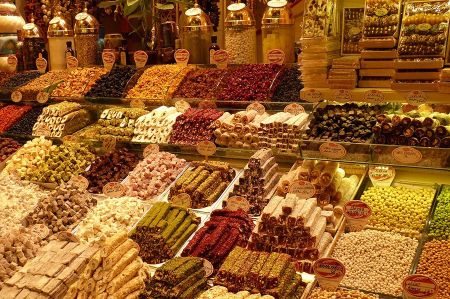 On January 19, 1392, Skopje came under Ottoman rule for more than 500 years. As the Yugoslavian orientalist Hasan Kaleshi reported, the first Ottoman margrave to live in Skopje was Paşayiğit Bey, who built the city's oldest Islamic building, the Meddah Baba Mosque, around 1397. He was followed by his adopted son Ishak Bey, who built a hospice (later converted into a Friday Mosque, which became known as the Colourful Mosque) and further donated a madrasa and library. To maintain his communal facilities, Ishak Bey specified in his Wakfiye the income from two hammams, 102 shops and two hanen as well as the income from two villages and seven land complexes including fields and gardens from the surrounding area. He himself was later buried in the courtyard of the Colorful Mosque.
On January 19, 1392, Skopje came under Ottoman rule for more than 500 years. As the Yugoslavian orientalist Hasan Kaleshi reported, the first Ottoman margrave to live in Skopje was Paşayiğit Bey, who built the city's oldest Islamic building, the Meddah Baba Mosque, around 1397. He was followed by his adopted son Ishak Bey, who built a hospice (later converted into a Friday Mosque, which became known as the Colourful Mosque) and further donated a madrasa and library. To maintain his communal facilities, Ishak Bey specified in his Wakfiye the income from two hammams, 102 shops and two hanen as well as the income from two villages and seven land complexes including fields and gardens from the surrounding area. He himself was later buried in the courtyard of the Colorful Mosque.
Junction of the trade routes from Edirne to Saraybosna
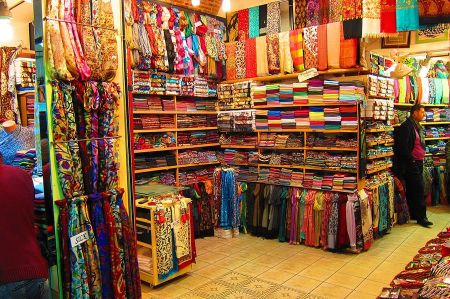 In the middle of the 15th century, Üskub, as Skopje was then called, had 5,145 tax-registered residents. Of these, 3,330 were Muslims, mostly Turks from Asia Minor, and 1,815 were Christians. Since the ethnicity of Christians was insignificant for taxation purposes, it was not recorded. However, it can be assumed that they spoke a South Slavic language, Greek and / or Albanian. The majority of the population worked in trade. An economic boom occurred in Skopje in the 16th century. It was favoured by the city's location at the junction of the trade routes from Edirne to Saraybosna and from Selanik (Thessaloniki) to Belgrade, by the Ottoman protectorate over Dubrovnik and the arrival of Sephardic Jews. By the middle of the 16th century, the city had more than 10,000 residents (7,425 Muslims, 2,735 Christians and 265 Jews) who worked in around 80 different professions. A synagogue was first built in Skopje in 1361. Around 1515 another severe earthquake occurred.
In the middle of the 15th century, Üskub, as Skopje was then called, had 5,145 tax-registered residents. Of these, 3,330 were Muslims, mostly Turks from Asia Minor, and 1,815 were Christians. Since the ethnicity of Christians was insignificant for taxation purposes, it was not recorded. However, it can be assumed that they spoke a South Slavic language, Greek and / or Albanian. The majority of the population worked in trade. An economic boom occurred in Skopje in the 16th century. It was favoured by the city's location at the junction of the trade routes from Edirne to Saraybosna and from Selanik (Thessaloniki) to Belgrade, by the Ottoman protectorate over Dubrovnik and the arrival of Sephardic Jews. By the middle of the 16th century, the city had more than 10,000 residents (7,425 Muslims, 2,735 Christians and 265 Jews) who worked in around 80 different professions. A synagogue was first built in Skopje in 1361. Around 1515 another severe earthquake occurred.
City as a huge settlement
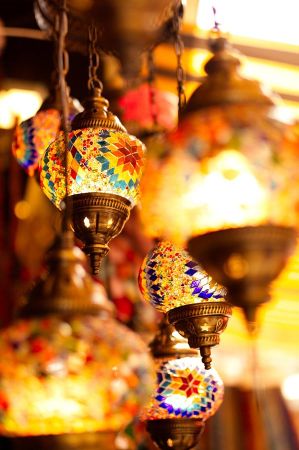 A detailed description of Skopje that was significant for the High Ottoman period (16th/17th century), three decades before the burning of Skopje by the Habsburg general Piccolomini in 1689, can be found in the “Travel Book” (Seyahatnâme) by the Ottoman traveller Evliya Çelebi. He described the city as a vast settlement that stretched on both sides of the Vardar. Above the city was the citadel, with around 100 team houses, storehouses and armouries. The approximately 1,060 stone houses with their red bricks shaped the cityscape. During this time there were also 9 Koran reading schools that were attached to the mosques, 20 dervish monasteries (Tekke), a Mewlewik monastery and 70 schools (Mekteb).
A detailed description of Skopje that was significant for the High Ottoman period (16th/17th century), three decades before the burning of Skopje by the Habsburg general Piccolomini in 1689, can be found in the “Travel Book” (Seyahatnâme) by the Ottoman traveller Evliya Çelebi. He described the city as a vast settlement that stretched on both sides of the Vardar. Above the city was the citadel, with around 100 team houses, storehouses and armouries. The approximately 1,060 stone houses with their red bricks shaped the cityscape. During this time there were also 9 Koran reading schools that were attached to the mosques, 20 dervish monasteries (Tekke), a Mewlewik monastery and 70 schools (Mekteb).
In 1660, Evliya witnessed the lively economic life in the over 2,100 shops in the several bazaars. Regarding the population structure, he notes that in addition to Muslims, there are also residents of Armenian, Bulgarian, Serbian and Jewish origins in the city who have their own places of worship. A large number of Catholics also lived in the city, but they held their services in the Serbian churches.
Bazaar the only monument of the varied culture
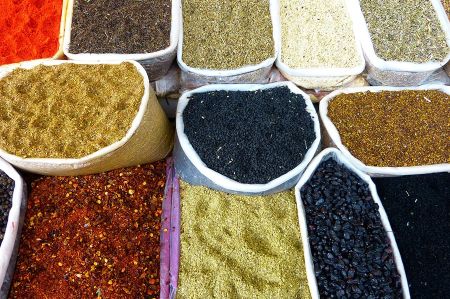 During the period of Ottoman rule in the city, the Old Bazaar square grew into the largest commercial district in Skopje.
During the period of Ottoman rule in the city, the Old Bazaar square grew into the largest commercial district in Skopje.
In its history, the bazaar has survived extensive damage from the earthquakes of 1555 and 1963, the huge city fire of 1689 and the world wars.
Despite this damage and destruction, the bazaar remains the only monument to the country's varied culture, incorporating characteristics of several different cultures and civilizations.
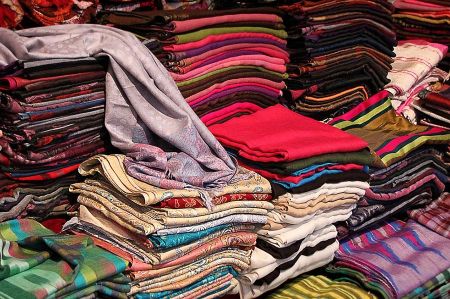 With a law of October 13, 2008, the Parliament of the Republic of Macedonia declared the Old Bazaar a cultural asset of particular importance to the state and the bazaar has been under permanent state protection ever since. At the beginning of 2010, a five-year program of revitalization of the bazaar began, with the aim of renewing the objects in its framework, giving support to the crafts, as well as affirming intensive economic and cultural development, which we have achieved during our time could at least partially confirm and confirm the tour. This part of the city is really worth a longer stay, the cultures of the past are so diverse and interesting.
With a law of October 13, 2008, the Parliament of the Republic of Macedonia declared the Old Bazaar a cultural asset of particular importance to the state and the bazaar has been under permanent state protection ever since. At the beginning of 2010, a five-year program of revitalization of the bazaar began, with the aim of renewing the objects in its framework, giving support to the crafts, as well as affirming intensive economic and cultural development, which we have achieved during our time could at least partially confirm and confirm the tour. This part of the city is really worth a longer stay, the cultures of the past are so diverse and interesting.
Please read as well:
Skopje - Excursion through the capital of Macedonia
Roman Scupi - first settlement in the history of Skopje
-
 Skopje - visiting the Old Bazaar
Skopje - visiting the Old Bazaar
Skopje - visiting the Old Bazaar
Skopje - visiting the Old Bazaar
-
 Skopje - visiting the Old Bazaar
Skopje - visiting the Old Bazaar
Skopje - visiting the Old Bazaar
Skopje - visiting the Old Bazaar
-
 Skopje - visiting the Old Bazaar
Skopje - visiting the Old Bazaar
Skopje - visiting the Old Bazaar
Skopje - visiting the Old Bazaar
-
 Skopje - visiting the Old Bazaar
Skopje - visiting the Old Bazaar
Skopje - visiting the Old Bazaar
Skopje - visiting the Old Bazaar
-
 Skopje - visiting the Old Bazaar
Skopje - visiting the Old Bazaar
Skopje - visiting the Old Bazaar
Skopje - visiting the Old Bazaar
-
 Skopje - visiting the Old Bazaar
Skopje - visiting the Old Bazaar
Skopje - visiting the Old Bazaar
Skopje - visiting the Old Bazaar
-
 Skopje - visiting the Old Bazaar
Skopje - visiting the Old Bazaar
Skopje - visiting the Old Bazaar
Skopje - visiting the Old Bazaar
-
 Skopje - visiting the Old Bazaar
Skopje - visiting the Old Bazaar
Skopje - visiting the Old Bazaar
Skopje - visiting the Old Bazaar
-
 Skopje - visiting the Old Bazaar
Skopje - visiting the Old Bazaar
Skopje - visiting the Old Bazaar
Skopje - visiting the Old Bazaar
-
 Skopje - visiting the Old Bazaar
Skopje - visiting the Old Bazaar
Skopje - visiting the Old Bazaar
Skopje - visiting the Old Bazaar
-
 Skopje - visiting the Old Bazaar
Skopje - visiting the Old Bazaar
Skopje - visiting the Old Bazaar
Skopje - visiting the Old Bazaar
-
 Skopje - visiting the Old Bazaar
Skopje - visiting the Old Bazaar
Skopje - visiting the Old Bazaar
Skopje - visiting the Old Bazaar
https://www.alaturka.info/en/macedonia/skopje/6394-skopje-our-visit-to-the-old-bazaar#sigProId179d86476b
